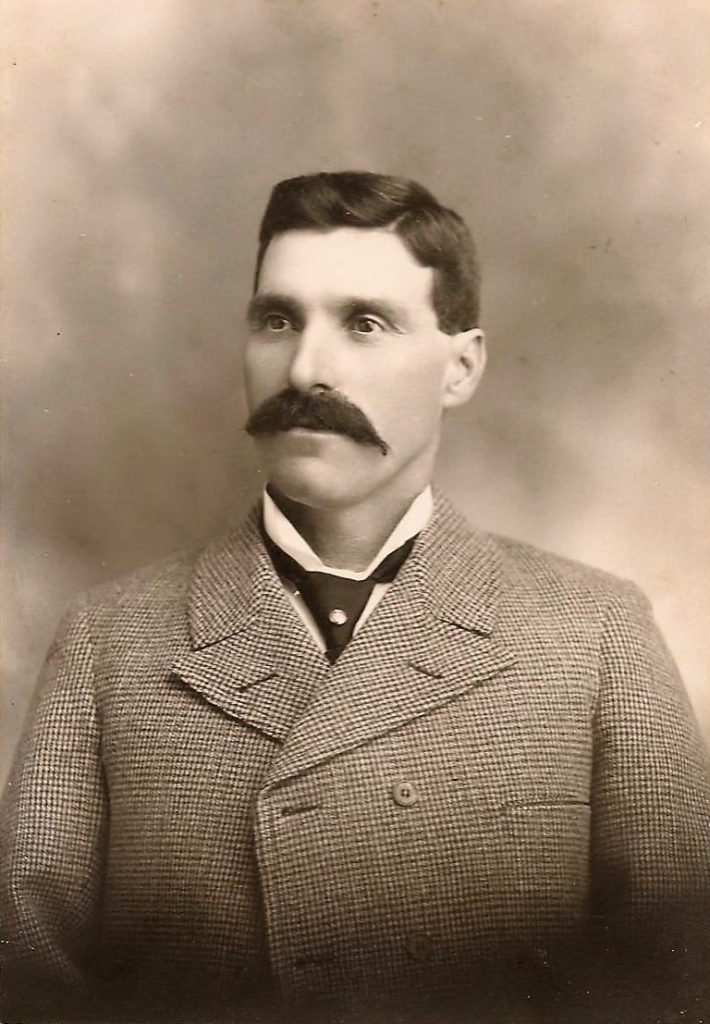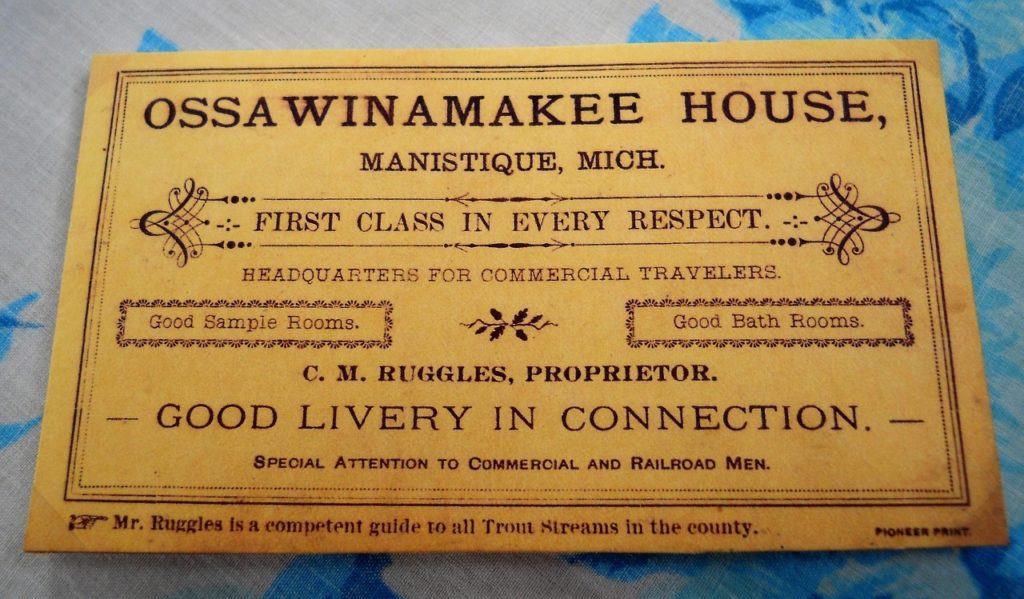
1880’s image of Edwin Cookson. Photo courtesy of Anthony Perkins
Edwin Cookson was born in Greenfield, Maine, in May of 1854. He was the second oldest child in a family of six boys and 2 girls. His parents, Joseph and Maria Cookson owned a farm in Greenfield, but all of their sons worked as loggers and river drivers in Maine.
During the early 1870’s Edwin Cookson migrated west to Oshkosh, Wisconsin. There in 1878 he responded to a “Help Wanted” ad posted in the Oshkosh papers. Ebenezer James was seeking laborers to work at the James Brothers sawmill east of Manistique.

